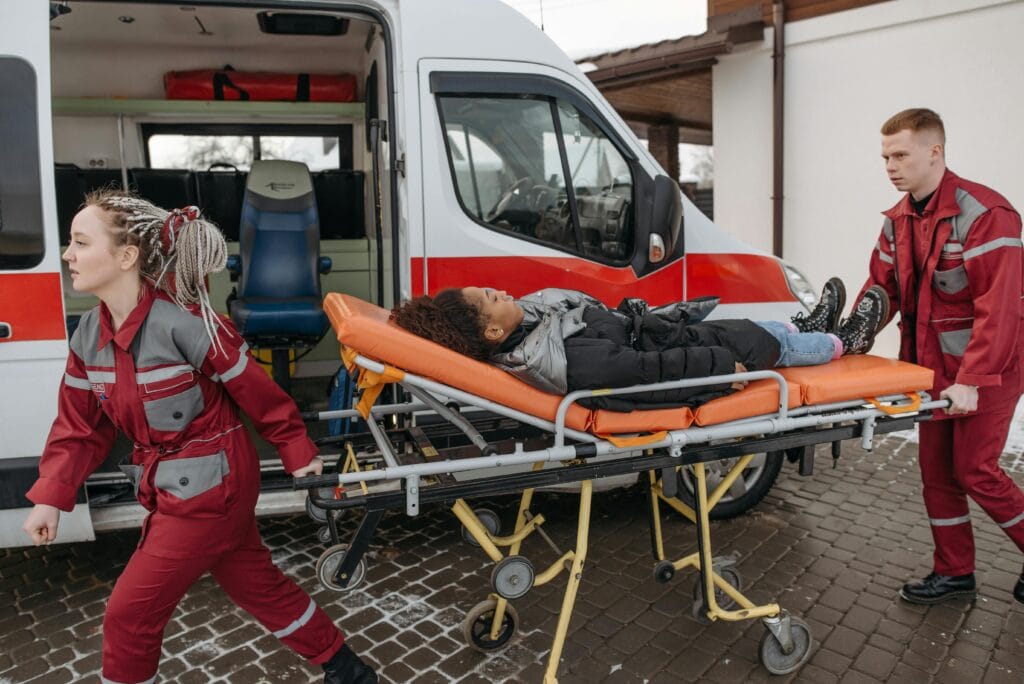Open Fractures: A Critical Orthopedic Emergency
Open fractures represent some of the most challenging injuries in orthopedic trauma, characterized by a broken bone that communicates with the external environment through a breach in the skin. These injuries demand immediate, systematic management due to their high risk of infection, delayed healing, and potential limb-threatening complications. The Gustilo-Anderson classification system serves as the gold standard for assessing injury severity and guiding treatment decisions.

The Gustilo-Anderson Classification System
This widely adopted classification system categorizes open fractures based on wound size, contamination level, and soft tissue damage:
1. Grade I
- Wound Characteristics: Clean wound <1 cm in length
- Tissue Damage: Minimal soft tissue injury
- Contamination: Little to no contamination
- Clinical Significance: Lowest infection risk (0-2%)
2. Grade II
- Wound Characteristics: Laceration 1-10 cm in length
- Tissue Damage: Moderate soft tissue damage
- Contamination: Moderate contamination
- Clinical Significance: Infection risk 2-7%
3. Grade III (Subdivided into IIIA, IIIB, IIIC)
- Wound Characteristics: >10 cm wound or any size with:
- High-energy trauma
- Extensive contamination (farmyard/marine)
- Segmental fractures
- Traumatic amputations
Subclassifications:
- IIIA: Adequate soft tissue coverage possible
- IIIB: Requires flap coverage due to extensive soft tissue loss
- IIIC: Vascular injury requiring repair (highest amputation risk)
Emergency Department Management Protocol
Primary Survey (ATLS Protocol)
- Airway with cervical spine protection
- Breathing and ventilation assessment
- Circulation with hemorrhage control
- Disability (neurological status)
- Exposure (complete trauma survey)
Fracture AssessmentSecondary Survey: Focused Orthopedic Assessment
- History Taking:
- Mechanism of injury (high vs. low energy)
- Environmental exposure (soil, water, farmyard)
- Tetanus immunization status
- Time since injury
- Physical Examination:
- Visual Inspection:
- Photograph wound before dressing
- Cover with sterile saline-soaked dressing
- Note any skin tenting or degloving
- Palpation:
- Assess for crepitus
- Evaluate soft tissue integrity
- Neurovascular Assessment:
- Document distal pulses (Doppler if needed)
- Motor/sensory examination
- Visual Inspection:
Immediate Interventions
- Antibiotic Therapy:
- First-line: Cefuroxime 1.5g IV q8h
- Penicillin allergy: Clindamycin 600mg IV q6h
- Heavy contamination: Add Gentamicin 1.5mg/kg IV q8h
- Tetanus Prophylaxis:
- Tetanus toxoid if immunization status uncertain
- Wound Management:
- Remove gross contaminants only
- Avoid aggressive irrigation in ED
- Maintain moist sterile dressing
- Fracture Stabilization:
- Anatomic reduction if neurovascular compromise
- Splint application (plaster or prefabricated)
Definitive Surgical Management
Surgical Timing Guidelines
- Emergency (<6 hours):
- Vascular compromise
- Gross contamination (marine/farmyard)
- Compartment syndrome
- Urgent (<24 hours):
- All other open fractures
- Tibial fractures (higher complication risk)
Surgical Principles: The 7 Critical Steps
- Preoperative Preparation
- General anesthesia
- Tourniquet application (deflatable)
- “Pre-scrub” with warm saline/chlorhexidine
- Nailbrush for embedded debris
- Radical Debridement
- Extend wound to visualize entire “zone of injury”
- Sequential tissue layer assessment:
- Skin: Excise 1-2mm of wound edges
- Fat/Fascia: Remove non-viable tissue
- Muscle: Judge by “4 Cs”:
- Color (pink/red viable)
- Contractility (pinch test)
- Consistency (firm vs. mushy)
- Capacity to bleed
- Bone: Perform “tug test” for fragments
- Irrigation: 6L warmed saline (low pressure)
- Fracture Stabilization
- Internal Fixation Options:
- Intramedullary nailing (diaphyseal fractures)
- Plate fixation (periarticular fractures)
- External Fixation Indications:
- Severe contamination
- Polytrauma patients
- Planned staged reconstruction
- Internal Fixation Options:
- Wound Closure Decision Making
- Primary Closure Criteria:
- Healthy patient (no comorbidities)
- Complete debridement
- No farmyard/marine exposure
- Tension-free approximation
- Delayed Closure:
- Vacuum-assisted closure (VAC) dressing
- Gentamicin bead pouch for contaminated cases
- Primary Closure Criteria:
- Second-Look Procedures
- 48-hour re-exploration for:
- Questionable tissue viability
- High-grade injuries
- Heavy initial contamination
- 48-hour re-exploration for:
- Soft Tissue Reconstruction (Reconstructive Ladder)
- Options in Ascending Complexity:
- Secondary intention healing
- Primary closure
- Skin grafting (split-thickness)
- Local flaps (e.g., gastrocnemius flap)
- Regional flaps
- Free tissue transfer (e.g., latissimus dorsi)
- Options in Ascending Complexity:
- Bone Defect Management
- Acute Options:
- Cement spacer with antibiotics
- Acute shortening (especially upper limb)
- Staged Reconstruction:
- Masquelet technique
- Bone transport (Ilizarov method)
- Acute Options:
Complications and Their Prevention
Early Complications
- Infection:
- Superficial (5-15%)
- Deep (3-10%)
- Osteomyelitis (1-5%)
- Compartment Syndrome
- Acute Vascular Compromise
Late Complications
- Nonunion (5-20%)
- Malunion
- Chronic Osteomyelitis
- Post-traumatic Arthritis
Preventive Strategies
- Strict adherence to antibiotic protocols
- Meticulous surgical technique
- Early soft tissue coverage (<7 days)
- Multidisciplinary approach (ortho/plastics)
Special Considerations
High-Risk Scenarios
- Farmyard Injuries:
- Add penicillin for anaerobes
- Consider hyperbaric oxygen
- Marine Injuries:
- Add doxycycline for Vibrio coverage
- More aggressive debridement
- Ballistic Injuries:
- Different debridement philosophy
- Often require external fixation
Pediatric Open Fractures
- Higher healing potential
- More conservative debridement
- Earlier weight-bearing
Rehabilitation and Follow-up
Postoperative Care
- IV antibiotics for 24-72 hours
- VAC dressing changes q48-72h
- Early physical therapy (non-weight bearing)
Monitoring Schedule
- Weekly for first month
- Monthly until union
- Annual long-term follow-up for infection surveillance
Conclusion: Keys to Successful Management
- Time is Tissue: Expedite debridement (<24h)
- Team Approach: Orthopedic + plastic surgery
- Aggressive Debridement: The foundation of success
- Stable Fixation: Enables soft tissue healing
- Early Coverage: <7 days reduces infection
For Further Reference:
